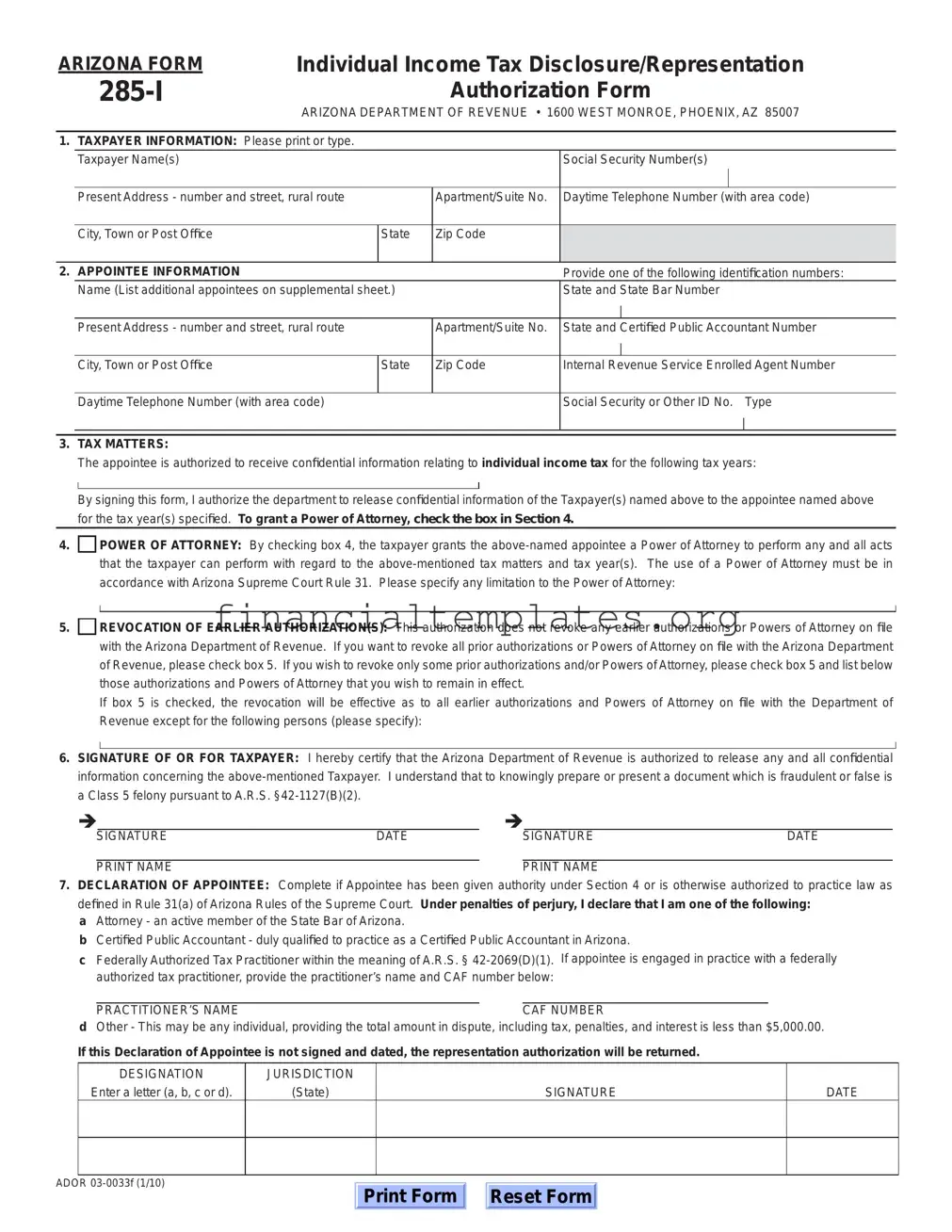The Tax POA 285-I form establishes a relationship where an individual or entity (the principal) grants another individual or entity (the agent) the power to act on their behalf, particularly for tax-related matters. A General Power of Attorney (POA) operates on a similar principle. In a General POA, an agent is given broad powers by the principal to handle various affairs, including but not limited to financial and business transactions, not just limited to tax matters. The main similarity lies in the delegation of decision-making power from the principal to the agent.
Comparable as well, the Durable Power of Attorney for Health Care notably diverges in its focus on health decisions rather than financial or tax-related ones. Like the Tax POA 285-I, it enables an individual to designate another person to make decisions on their behalf. However, its specificity towards health care decisions under circumstances where the principal is unable to make those decisions themselves is what sets it apart, highlighting the versatility in the scope of powers that can be assigned through such documents.
The Limited Power of Attorney form closely resembles the Tax POA 285-I by allowing the principal to grant specific powers to an agent. This document, however, is customizable to various tasks beyond tax matters, such as selling property or managing certain financial affairs. The critical similarity is the limitation of powers to designated areas or tasks, providing a focused scope of authorization compared to broader POA forms.
Another related document is the Springing Power of Attorney. This form becomes effective under specific conditions set by the principal, such as illness or disability. While it can cover a range of matters, including taxes, its distinguishing feature is its "springing" mechanism, which holds the agent's authority in abeyance until a triggering event occurs. This contrasts with the Tax POA 285-I's immediate effect upon execution.
For businesses, the Corporate Power of Attorney is remarkably akin to the Tax POA 285-I, as it allows a business entity to appoint an individual or another business to act on its behalf in matters that could include tax affairs. The principal-agent relationship is essential in both documents, facilitating the delegation of authority to handle specific transactions or operational functions, underscoring the adaptability of power of attorney forms to various contexts.
The Real Estate Power of Attorney offers a more targeted version of authorization, specifically for real estate transactions. Similar to the Tax POA 285-I, it grants an agent the power to act on the principal’s behalf but narrows its focus to buying, selling, managing, or refinancing real estate properties. The parallel lies in how both documents provide a legal framework for representation in specific types of transactions.
Lastly, the Advanced Healthcare Directive, or Living Will, parallels the Tax POA 285-I in its purpose to prepare for future scenarios where the principal cannot make decisions themselves. While the Advanced Healthcare Directive focuses on medical treatment and end-of-life care rather than tax matters, both documents showcase the foresight in delegating decision-making authority to ensure the principal’s wishes are followed in critical situations.
In summary, while each of these documents serves a unique purpose or addresses different areas of one’s personal or business affairs, they all share the fundamental concept of assigning authority to another. The Tax POA 285-I form, similar to these documents, plays a crucial role in planning and managing specific aspects of one’s life, financial or otherwise.

